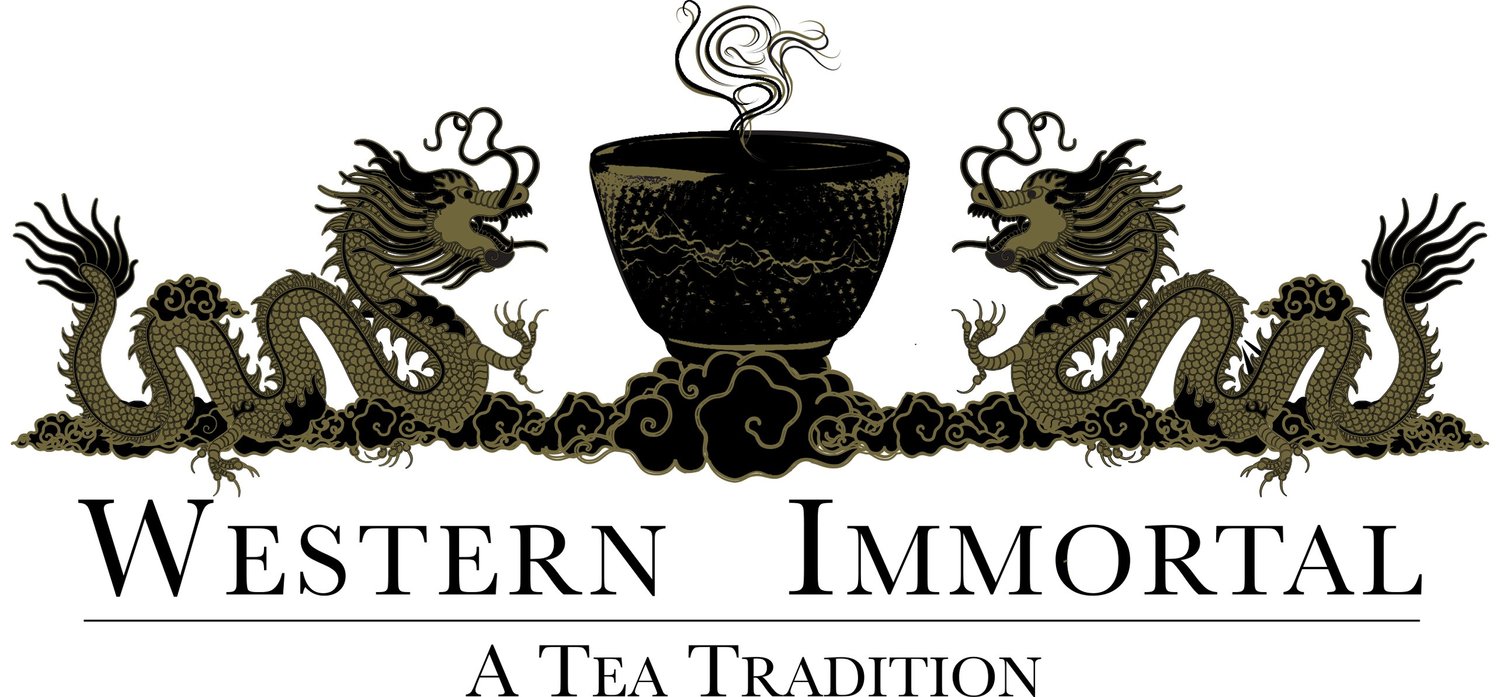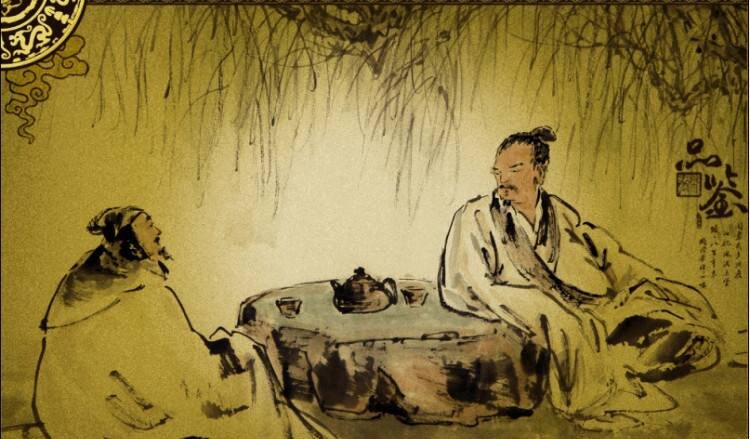The Book of Tea
Lu Yu and a colleague discussing tea
“Its liquor is the sweetest dew of heaven” Lu Yu, Chajing.
The literature on tea wasn’t always as prevalent as it is today. In ancient China, for a very long period of time, no works of literature devoted specifically to tea are known. By the mid-700s A.D., the art and craft of tea were practiced perhaps most extensively in monasteries. During this time, if there were any meaningful writings on tea at all, they were confined to dusty temple scrolls.
Lu Yu, an orphan, was taken in to be raised by a Buddhist monk in Hubei province around this time. There are differing accounts of Lu Yu’s education going forward at the temple. The following is one such account. His foster father was the abbot, Zhiji, an expert tea master at the Dragon Cloud Monastery. He taught the young Lu Yu all about tea; how to cultivate it, pluck it, process it, prepare it, and understand it. Lu Yu’s expertise and love for tea continued to grow as he practiced and learned over the years. By the age of 23, he knew tea was his life path, and he was inspired to write what would be called the Chajing, or The Classic of Tea. After going through numerous drafts, nearly two decades later he finally finished and published the first book of tea ever to be released. Consisting of seven thousand characters, the work was the summation of his life and travels with tea. It was a huge success and best seller, achieving considerable fame and notoriety all over China and even amongst many foreigners, including Tibetans, Uighurs, and Japanese. It is made of “Three Scrolls Ten Chapters” (三卷十章): origin, tools, making, utensils, boiling, drinking, history, growing regions, simplify, and pictorialize. The book of tea included all of the technical aspects of tea, such as where it’s found and produced, methods of recognizing and choosing tea, and methods of preparation. Lu Yu conveyed what could have been very dry information in a very poetic and even spiritual way. Due to the nature of the classical Chinese characters, many passages in the book can be interpreted in multiple ways. One passage, “Goodness is a decision for the mouth to make” can also be read as “Discrimination of good (and bad) tea is a matter for (secret) oral transmission.” The complexity of interpretation concealed in the simplicity of characters sparked comparisons with other ancient Chinese classics of literature. The work became an instant classic with all classes of people, including scholars, officials, merchants, and laypeople. Lu Yu had imparted to society a treasure trove of wisdom along with his personal love of tea.
Lu Yu and the Chajing
After having a lifetime of tea-related journeys, from high mountain paths to elegant imperial courts, the tea master, Lu Yu, retired, withdrawing from the world to meditate and drink tea.
Huangfu Zeng’s poem about Lu Yu
A thousand mountains will greet my departing friend, when the spring teas blossom again. With such breadth and wisdom, serenely picking tea—through morning mists or crimson evening clouds—his solitary journey is my envy. We rendezvous at a remote mountain temple, where we enjoy tea by a clear pebble fountain. In that silent night, lit only by candlelight, I struck a marble bell—its chime carrying me a hidden man deep into thoughts of ages past.
— “The Day I Saw Lu Yu off to Pick Tea”
References:
“A Tea Lover’s Treasury,” James Norwood Pratt
“The Way of Tea,” Aaron Fisher
“Chajing,” Lu Yu
excerpt from the Chajing
by Dr. Niko Olympiadis



